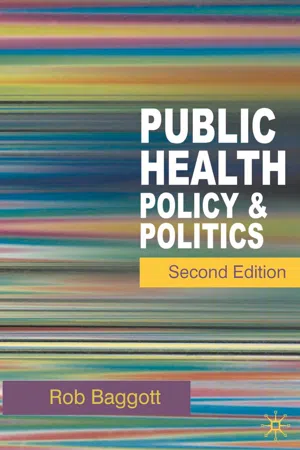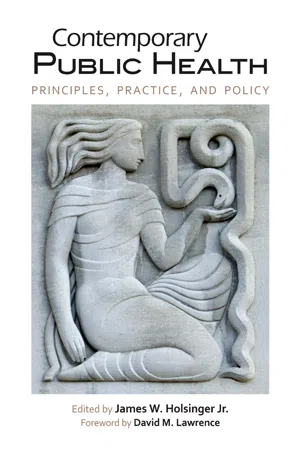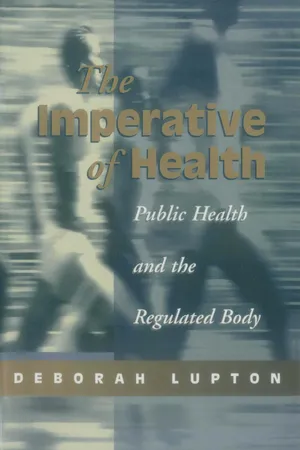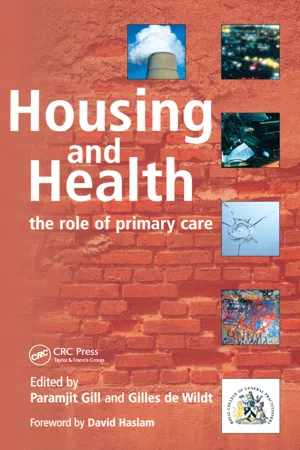History
Public Health Acts
Public Health Acts refer to a series of laws enacted in the 19th and early 20th centuries in the United Kingdom. These acts aimed to improve public health and sanitation by addressing issues such as sewage, water supply, and housing conditions. They granted local authorities the power to implement measures for disease prevention and environmental health, laying the foundation for modern public health practices.
Written by Perlego with AI-assistance
Related key terms
6 Key excerpts on "Public Health Acts"
- Kant Patel, Mark E Rushefsky(Authors)
- 2015(Publication Date)
- Routledge(Publisher)
The model act is designed to help state and local governments modernize their public health laws. The act is very comprehensive and spells out legal language the states could use in their modernization efforts (Late 2003). However, how successful state governments are in modernizing their public health law remains to be seen in light of the politics surrounding a proper balance between values of government authority/power, and community good versus the values of individual autonomy, liberty, and property. The issue of quarantine has already generated heated debate in American politics. Recently, President Bush added SARS to the list of illnesses that could be subject to quarantine, and he issued an order giving federal authorities the power to quarantine or isolate people entering the United States. However, this directive has no impact on individuals already here, leaving the decision on quarantine to each state government (Serafini 2003). The public health laws of each state have evolved over many decades and they reflect the concerns, science, and politics of their specific time periods. Furthermore, state public health laws reflect an expression of constituency expectations (Gebbie 2000). Thus, efforts to modernize public health laws in each state will be influenced by local concerns, science, politics, and public expectations. Each state is likely to follow its own unique path to reform.Law as a Tool to Protect the Public’s HealthAside from the challenge of updating antiquated, inconsistent, and overlapping state and local laws and regulations, public health professionals will also need to become more involved in the legislative and policymaking process and be willing to use law as an important tool to improve public health. One of the challenges confronting public health professionals is to help legislators and policymakers connect the dots between public policies and translate scientific knowledge into public health laws and policies. This requires a partnership based on shared objectives among legislators, public health officials, lawyers, and community organizations (Benjamin, Lopez, and Monson 2002). Finding partners and allies is necessary for success (Gregoire 2002).Governments at all levels have passed laws to protect public health through the regulation of private markets and individual behavior. In fact, a thirty-year increase in longevity during the twentieth century was in large part the result of improvements in areas such as pure water, pure food, motor vehicle-related injuries, and the like through the passage of laws such as the Safe Drinking Water Act (1974), the Highway Safety Act (1966), and the Pure Food and Drug Act (1906), among others (Fielding et al. 2002). Translating scientific knowledge into laws to improve public health has been at the heart of much of the statutory authority of public health (Fielding et al. 2002). Since the late 1980s, public health advocates have used a variety of strategies such as promoting specific laws, ballot initiatives, and court litigation to advance public health policies. Because elected policymakers and not public health experts generally have the final word on public health policy, and elected public officials have an eye toward reelection, voter education also has to be an important part of this strategy to make policymakers act on issues they have been reluctant to act on (DeMarco and Schneider 2000). Laws can act as a tool to advance public health because not only can they deter people from living unhealthy lifestyles, they can also educate people and businesses and provide incentives for creating safe products and an environment conducive to protecting and promoting the public’s health (Gostin 2000b). The critical question is whether the policymakers, that is, legislators, have the necessary information and incentives to act on public health issues (Hyman 2000). To achieve the desired public health outcomes, public health agencies may use a variety of legal mechanisms such as laws, regulations, public policies, contracts, and the like (Lazzarini and Elman 2002). It is also important to note that aside from specific public health laws, improvement in population health may also be achieved as a by-product of laws and regulations that have other primary purposes such as economic development, transportation, housing, and the like (Fox 2001).- eBook - ePub
Public Health
Policy and Politics
- Rob Baggott(Author)
- 2010(Publication Date)
- Bloomsbury Academic(Publisher)
www.bmj.com , 2007).Cholera aside, other circumstances played a part in the emergence of the new legislation. The Reform Act of 1832 widened the franchise, in theory making governments more vulnerable to pressure from the electorate. However, this should not be exaggerated, as the vote remained restricted to a minority of men. More significant perhaps was the Chartist agitation of the 1830s and 40s, which forced an awareness of the grievances of the working classes on both government and Parliament. Wohl (1984) pointed out that the Chartists were not particularly interested in public health and actually opposed some sanitary measures. Nevertheless, as Woodward (1962, p. 147) correctly observed, ‘this agitation of the poor compelled other classes to think about the condition of England’, and strengthened the hand of those seeking to promote public health reform.Battles were fought on other fronts, notably on working conditions. Here a similar story unfolded: the collection of evidence and organized pressure producing public outcry and then legislation to curb the worst evils. Legislation governing factories and mines provided further examples of how reform developed a momentum of its own. The 1833 Factory Act, which regulated hours of work, had limited impact. Adult hours of work were not covered by the Act, and only a small number of inspectors were appointed to enforce the law and they had limited powers. However, in 1840 a Commission was established to examine child labour in mines and factories. Its first report shocked the public with revelations of children and women working in barbaric conditions. This created a favourable political climate for the passage of the Mines Act (1842), vigorously contested by the mine owners, which prohibited the employment of all females and boys under 10 years of age underground, set age limits for those tending machinery, and created a mines inspectorate to regulate employment conditions. Another battlefront was the campaign against alcohol (Harrison, 1971; Dingle, 1980). Although not a central concern of the public health movement (Wohl, 1984), the health and social implications of alcohol consumption were widely acknowledged. A select committee found: - eBook - ePub
Contemporary Public Health
Principles, Practice, and Policy
- James W. Holsinger(Author)
- 2012(Publication Date)
- The University Press of Kentucky(Publisher)
Introduction History and Context of Public Health Care James W. Holsinger Jr. and F. Douglas Scutchfield The history of public health in the United States demonstrates cycles of action and inaction, funding and a lack thereof. From its inception in 1798 until the post–September 11, 2001, period, the development of public health, according to Fee and Brown, has been “consistently plagued by organizational inefficiencies, jurisdictional irrationalities, and chronic underfunding. It is apparent that public health—in addition to lacking the support it deserves—has long been subject to a social and cultural discounting, especially in comparison to high-technology medicine, which undermines its authority.” 1 A review of its history results in understanding that public health is favored politically and fiscally during and immediately after periods of crisis, only to slip into obscurity once the crisis has passed. The result of such attention and inattention is the lack of a clear trajectory in providing for the health of the American population and its communities. Seaport Epidemics and the First Boards of Health On July 16, 1798, President John Adams signed an act passed by the Fifth Congress of the United States that provided for “the temporary relief and maintenance of sick or disabled seamen in the hospitals or other proper institutions now established in the several ports of the United States, or in ports where no such institutions exist, then in such other manner as he [the secretary of the treasury] shall direct.” 2 The act was a response to epidemic diseases such as smallpox, typhoid fever, plague, and especially yellow fever that were ravaging the eastern seaports. Notions of public health were rudimentary at best, with quarantine being one of the most effective mechanisms for dealing with outbreaks of epidemics, which were often thought to be initiated by seamen returning from lengthy voyages to foreign lands - eBook - ePub
The Imperative of Health
Public Health and the Regulated Body
- Deborah Lupton(Author)
- 1995(Publication Date)
- SAGE Publications Ltd(Publisher)
Traditional historians of public health have tended to describe a narrative of progression. For these historians, the advent of the public health or sanitarian movement in the nineteenth century, particularly as it emerged in Britain and continental Europe under the dynamic interventions of the great reformers (almost invariably all white, bourgeois men), was the beginning of a ‘modern’, rationalized approach to protecting and preserving the public’s health. The standard narrative of such histories begins by discussing the filth, squalor, ignorance and superstitious beliefs that prevailed before the nineteenth century and recounts the progressive introduction of the sanitarians’ ideas into hygienic conduct as a continuing fight against general apathy, ignorance and dirt. The discovery of the microbe in the late nineteenth century is hailed as the watershed for a ‘scientific’ public health, enabling public health reformers to strengthen their arguments for a web of governmental regulations around public and private hygiene (for an example of such a history, see Duffy, 1990). Other histories of public health have taken a social history perspective, adopting a somewhat more critical stance in highlighting the inequities inherent in the nineteenth- and early twentieth-century public health movements’ treatment of groups such as women, immigrants, non-whites, the working class and the poor (for example, Rogers, 1992). Those adopting a social constructionist approach have located their histories in the broader socio-cultural context, seeking to explore the symbolic and ideological dimension of public health practices (Brandt, 1985; Corbin, 1986; Herzlich and Pierret, 1987; Davenport-Hines, 1990). The advent of HIV/AIDS in the early 1980s, with its evocation of ages-old meanings around disease and epidemics, has had a particularly stimulating effect on the writing of histories of public health from the social history and social constructionist perspectives (see, for example, several of the essays collected in Fee and Fox, 1988, 1992). - eBook - ePub
From Poor Law to Welfare State, 6th Edition
A History of Social Welfare in America
- Walter I. Trattner(Author)
- 2007(Publication Date)
- Free Press(Publisher)
The Public Health Council also ordered a satisfactory minimum wage for the State Commissioner of Health and other health officers so that people of merit would be attracted to and remain in the service. Finally, the new body gave direct control over most aspects of local health work, including the power to enforce both the public health law and the state sanitary code, to the State Department of Health and its commissioner, bringing health work throughout the state under the control of a centralized authority.Speaking of the statute responsible for these changes, Dr. C. E. A. Winslow said that it “unquestionably marked the most important landmark in the history of state health administration in the United States since the creation of the first health department by Massachusetts in 1869.” Although amended in its details several times, the 1913 Public Health Law remains the basis of public health work not only in New York but in most other states, all of which reorganized their own procedures according to its provisions.The remarkable reduction in the morbidity and mortality rates of tuberculosis, diphtheria, syphilis, and other communicable diseases cannot be attributed solely to improved and better administered sanitation laws, health education, hospitals, public health nursing, and the like. New scientific discoveries, especially the so-called wonder drugs (streptomycin, para-aminosalicylic acid, and isoniazid), improved services by private medical practitioners, better social and economic conditions, free school lunches and better diet, and numerous other developments related elsewhere all contributed to the saving of lives. Nevertheless, a large share of the extraordinary progress may be credited to the organized public health movement of the late nineteenth and early twentieth centuries.Social workers and other laymen whose devotion to public service was great, played an important part in that movement. They left as a permanent legacy to the nation not so much the principle that a great many lives could be saved through the prevention of communicable diseases, but that it was practical to do so. Their technical skill, political resourcefulness, and executive abilities helped transform scientific knowledge into legislation, ideas into public policy, that not only saved many lives and prolonged countless others but also improved the quality of life for all Americans. - eBook - ePub
Housing and Health
The Role of Primary Care
- Gill Paramjit, Gilles De Wildt, Gill Paramjit, Gilles De Wildt(Authors)
- 2017(Publication Date)
- CRC Press(Publisher)
1 For housing to achieve health gains, it is the social dimension that is most critical. In the last two decades, however, the social aims of housing policy have often been eclipsed by priorities rooted in the marketplace. It is against this background that we review the problems and potential associated with the two key means of using housing interventions to meet public health goals. First, we consider policies designed to secure a healthy stock of housing; second, we examine the policies which steer people with health problems into more or less therapeutic housing environments.A quest for healthy housing
The pursuit of a healthy housing stock lay at the core of the earliest Public Health Acts in the late nineteenth century. At a time when infectious diseases still accounted for the majority of the death rate, and despite the lack of hard evidence to link poor housing with high risks, politicians made the regulation of housing environments their main health priority. This strategy paid off. Broad-based public health initiatives are generally agreed to be at least as important as clinical medicine in achieving the remarkable mortality transition that Britain experienced in the late nineteenth and early twentieth centuries.2With time, however, the links between health and housing policy became less and less explicit. The last very dramatic intervention in the housing environment came with the slum clearances of the 1960s. By this time it was passively assumed rather than actively planned that by demolishing the worst of the slums and providing new, healthier replacement homes, the country would rid itself once and for all of its stock of unhealthy housing.During the 1970s, however, and more so during the 1980s, complacency was replaced with concern. First, it was noted that high rise alternatives to the old city centre slums carried their own risks, particularly to mental health. Then the extent of disrepair and degradation in low income owner occupation, as well as in the newer but poorly built council stock, became evident, as did the health consequences of this. The most recent housing condition surveys in England, Scotland and Wales suggest that, against a background of cuts of 60% in public investment in housing, households in every tenure sector are subject to living conditions that may be harmful to their health.3 , 4
Learn about this page
Index pages curate the most relevant extracts from our library of academic textbooks. They’ve been created using an in-house natural language model (NLM), each adding context and meaning to key research topics.





